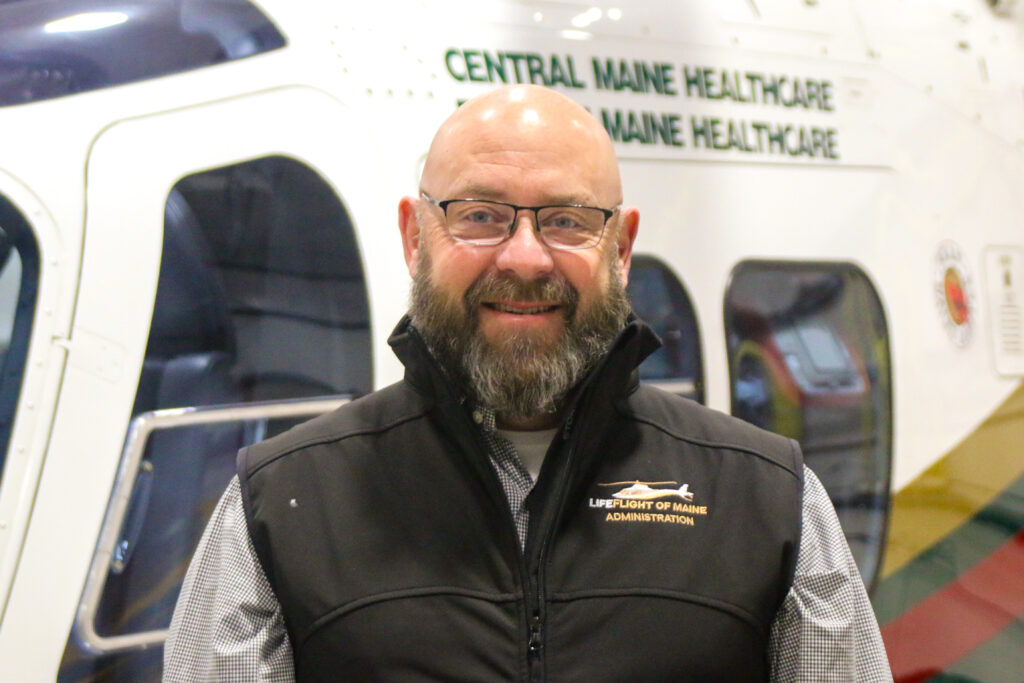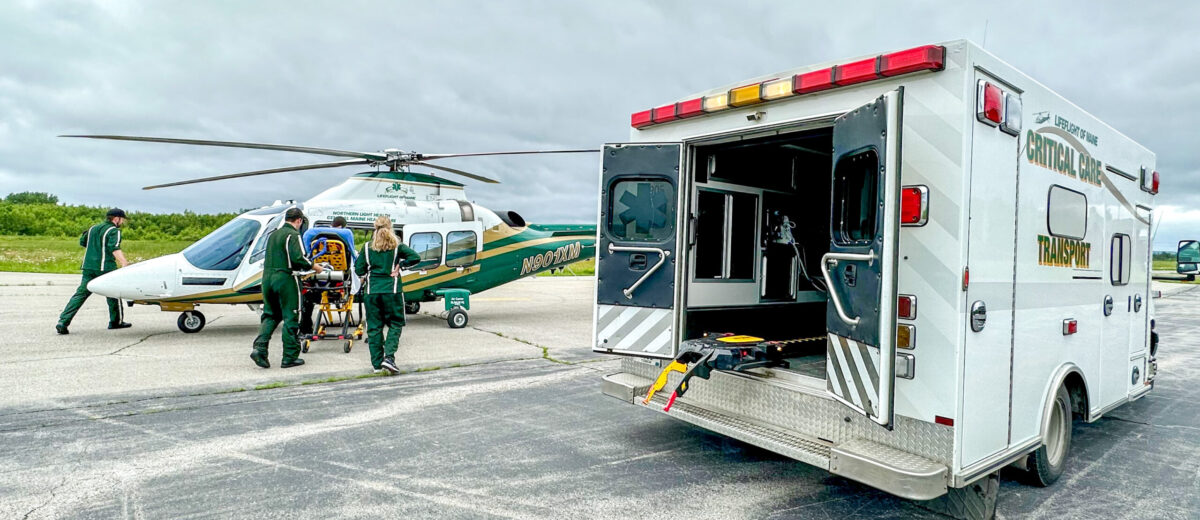Forging Stronger Partnerships in EMS
This past winter, LifeFlight of Maine launched a significant new initiative to bolster its relationships with hospitals, first responders, emergency medical services (EMS) agencies, 911 centers, and other stakeholders that rely on LifeFlight to deliver critical care quickly and reliably for patients facing a life-threatening medical emergency. This initiative is already making an impact and improving Maine’s EMS system.
Responding with the appropriate level of care as quickly as possible relies on collaboration and coordination among partners. These include local police and fire departments, ambulance services, hospitals, healthcare systems, state and federal agencies, and independent nonprofits like LifeFlight of Maine — there are more than 300 licensed EMS agencies in the state, according to Maine EMS which issues those licenses. LifeFlight interfaces with its partners on every single one of the nearly 2,500 patient transports it completes each year. It now has an initiative dedicated to improving coordination with LifeFlight’s EMS and hospital partners, along with a director to lead it.
In January, with support from The LifeFlight Foundation, LifeFlight of Maine hired Kyle Madigan as its first Director of Client Relations. Kyle has decades of experience as a flight nurse and critical care provider, an educator, and an air medical program administrator. Most recently, he led the Dartmouth Hitchcock Advanced Response Team (DHART), LifeFlight’s peer service based in Lebanon, New Hampshire. He currently serves on the Board of Directors for the Association of Critical Care Transport, and he has previously held board positions with the Board Certification for Emergency Nurses, the Air & Surface Transport Nurses Association, and the Air Ambulance Patient Billing Advisory Committee of the U.S. Department of Transportation.

Under Madigan’s leadership, LifeFlight is working to expand its outreach and education efforts across all 16 counties in Maine, as well as parts of New Hampshire along the Maine border, an area for which LifeFlight’s Sanford-based team often provides service. This initiative has three components, all with the same objective: to ensure the people of Maine receive the best emergency medical care available and the fastest response possible by strengthening professional relationships between LifeFlight and its partners.
The first part of the new initiative is increasing opportunities to present LifeFlight’s “Ground Safety and User Course,” which trains EMS agencies to identify when a patient needs a LifeFlight transport, to make a transport request, to safely secure a landing zone, and to transfer the patient into LifeFlight’s care. Successful collaboration often begets more collaborations and better care for patients facing a medical emergency. The Lee Fire Department, for example, which serves a town of fewer than one thousand residents, contacted Kyle about offering LifeFlight’s Ground Safety Course to its team after it had called LifeFlight for assistance twice in a five-month span. Lee was one of four departments that requested a Ground Safety Course in that same week. LifeFlight almost always sees an uptick in transport requests from communities in which it has recently taught its Ground Safety Course — interfacing is freshly rehearsed for both teams.
Secondly, in partnership with LifeFlight of Maine CEO Joe Kellner, Kyle is working to bolster operational collaboration with Maine’s 36 hospitals. The majority of calls to LifeFlight (90%) come from a hospital requesting to transfer an acutely ill patient to a facility that offers a higher level of care. This is a critically important service for Maine’s geographically dispersed system of community hospitals. The smooth, reliable, and rapid movement of these patients in a LifeFlight vehicle is vital both to the patient’s outcomes and to the capacity of the emergency medical system statewide to ensure all patients can access the care they need. Kyle and Joe are traveling around the state to meet with leaders and clinicians in emergency departments and intensive care units to improve coordination and logistics for the care teams who interface with LifeFlight crews.
The third part of this new initiative is the expansion of LifeFlight’s remote landing zones database. Most hospitals in Maine have a permanent helipad. Most towns do not. LifeFlight has worked for more than a decade with local leaders, first responders, and private citizens to establish temporary helicopter landing zones in rural areas. LifeFlight maintains a database of hundreds of temporary landing zones across Maine and parts of New Hampshire, which LifeFlight crews utilize to respond to medical emergencies. Many of these landing zones are a local ball field or parking lot. Others are simply a clearing deep in the Maine woods. By working with communities to expand this database, which is available both to LifeFlight and to 911 dispatchers statewide, LifeFlight is creating more critical healthcare access points across Maine.
In an emergency, a good plan and a strong system gives people their best chance on their worst day. Such plans take time to design and must be updated and reviewed regularly. New colleagues need to be trained and veteran providers reminded. At LifeFlight, we envision a future for Maine in which every hospital clinician is familiar with the services LifeFlight can offer their patients, every EMS provider knows when and how to call LifeFlight, and every community has a temporary helicopter landing zone plotted on a map. We are working diligently in 2024 to bring that vision to life.

